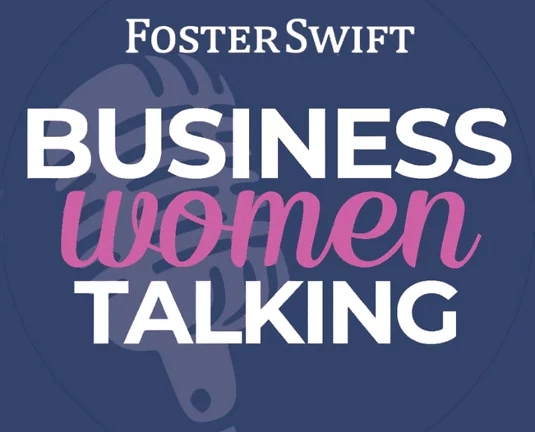Families First Corona Virus Response Act –Division E–Emergency Paid Sick Leave Act
Webmaster's Note: This article is superseded. Please click here to read the most current information.
 In the twilight hours of March 14, 2020, the U.S. House of Representatives passed the Families First Corona Virus Response Act (the “Act”). The Act has not yet become law–it is currently awaiting hearings in the Senate and, if approved, must be signed into law by the President. However, the bi-partisan approval suggests that the Act will, in some version, become law.
In the twilight hours of March 14, 2020, the U.S. House of Representatives passed the Families First Corona Virus Response Act (the “Act”). The Act has not yet become law–it is currently awaiting hearings in the Senate and, if approved, must be signed into law by the President. However, the bi-partisan approval suggests that the Act will, in some version, become law.
This article focuses on the Emergency Paid Sick Leave Act (the “Act”), which is one of eight (8) sections in the Act. Whereas other sections focus on topics ranging from nutritional waivers to budgetary considerations, this section arguably has the biggest impact on employers who will be required to provide their employees with paid time off relating to certain coronavirus events. Even businesses who were not required to provide time off before, or businesses that were not large enough to be bound by the Family Medical Leave Act (“FMLA”), are now faced with the burdens of the Act. This article addresses some of the questions we have received regarding the Act; however, because the Act has not yet become law, we do not rule out changes in the future.
When does the Act take effect?
This is the billion-dollar question. The Act provides that it will take effect “not later than 15 days after the date of enactment . . .” However, considering the procedural and political hurdles faced, it is unknown if, and when, it will become law.
What businesses must provide paid sick leave?
As written, the Act is expansive and touches even the small-business employer who was not subject to FMLA requirements in the past. In general, the Act requires private entities or individuals with fewer than 500 employees to provide paid sick leave. However, the Act gives the U.S. Department of Labor the ability to issue regulations for “good cause” to (1) “exclude certain health care providers and emergency responders” from providing paid sick leave, and (2) exempting “small businesses with fewer than 50 employees from the requirements of [providing paid sick leave] when the imposition of such requirements would jeopardize the viability of the business as a going concern.” To date, the U.S. Department of Labor has not issued any such regulations; however, we are monitoring this area and will try to provide updated guidance when appropriate.
What paid sick leave is required?
The Act requires covered employers to provide their employees paid sick time for any of the following:
- To isolate themselves because they were diagnosed with coronavirus.
- To allow an employee to “obtain a medical diagnosis or care” if the employee experiences coronavirus symptoms.
- To comply with a recommendation or order by a public official with jurisdiction or a health care provider on the basis that the physical presence of the employee on the job would jeopardize the health of others because of
- the exposure of the employee to coronavirus; or
- exhibition of symptoms of coronavirus by the employee.
- To care for or assist a family member of the employee
- who (i) is self-isolating because such family member has been diagnosed with coronavirus; or (ii) is experiencing symptoms of coronavirus and needs to obtain medical diagnosis or care.
- with respect to whom a public official with jurisdiction or a health care provider makes a determination that the presence of the family member in the community would jeopardize the health of other individuals in the community because of (i) the exposure of such family member to the coronavirus; or (ii) exhibition of symptoms of coronavirus by such family member.
- To care for employee’s children if the “school or place of care has been closed, or the child care provider of such child is unavailable, due to coronavirus.”
How much paid sick leave is required?
The amount of paid sick leave under the Act depends on the employee’s classification. Full-time employees get 80 hours of paid sick leave. Part-time employees get paid sick leave in the amount of hours equal to “the number of hours that such employee works, on average, over a 2-week period.” This imprecise definition can cause difficulty for employers with part-time employees whose schedules vary significantly. Paid sick time under the Act does not carry over from year to year.
What is the rate for paid sick leave?
Employees taking paid sick leave under the Act (except for the care of family members under section 4 above) must be paid their regular rate of pay. Employees taking paid sick leave under the Act to care for family members must be paid at least 2/3 of their regular rate of pay.
Is the paid sick leave in addition to any leave the company already provides?
Yes–this is unusual for government-mandated paid/unpaid sick leave laws. Paid sick leave under the Act is in addition to other paid time off that an employer offers to its employees. Moreover, the Act prohibits (i) employers from changing their current paid sick leave policies to avoid being subject to the law or (ii) require employees to use their work-provided PTO before taking leave under the Act.
Does the Act have a sunset provision?
Yes. The requirement to provide paid sick leave under the Act presumptively ends on December 31, 2020.
Is there a notice provision?
Yes. While not yet drafted, the Act requires that certain notices are posted “in conspicuous places on the premises … where notices to employees are customarily posted.” The Act provides that this notice will be drafted by the Secretary of Labor within seven (7) days of enactment.
What are the penalties for not adhering to the Act?
Employers that don’t adhere to the Act can face stiff penalties. The government can determine that the employer has not paid minimum wages or has engaged in an unlawful act under the Fair Labor Standards Act which can subject the employer to risks of audit, fines, or civil action.
What about multi-employer bargaining agreements?
Employers subject to a multi-employer bargaining agreement are required to remit contributions to the “fund, plan, or program based on the hours of paid sick time each of its employees is entitled to under” the Act.
How can employers pay for these benefits?
Employers are expected to foot the bill for the paid time off benefits provided under the Act. However, certain loans through the Small Business Administration and financial institutions may be available to help cover these expenses. Additionally, while not addressed in the current language, the Act provides employers with the ability to seek tax credits “each calendar quarter an amount equal to 100 percent of the qualified sick leave wages paid by such employer with respect to such calendar quarter.” These tax credits will be subject to limitations and an in-depth discussion is beyond the scope of this article. For more information about the availability of tax credits, please contact us or your regular accountant.
Your employees are a huge investment for your organization. If you have questions about how this new law may impact your operations, please reach out to your Foster Swift attorney, Robert Hamor or a member of the Foster Swift employment team.
Foster Swift Collins & Smith, PC educational communications are intended for general information for our clients and friends. This article highlights specific areas of law and is not legal advice. The reader should consult an attorney to determine how this information applies to any specific situation.
Webmaster's Note: This article is superseded. Please click here to read the most current information.




